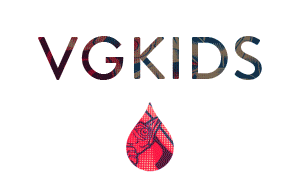MARK: A lot of the companies that we hold up as examples of localism, like Milk Thistle Farm, who you write about in the book, or Zingerman’s, here in Ann Arbor, are able to do what they do because they’ve found audiences that are willing to pay more for quality products that they believe in. These people are willing to pay a premium to obtain high-quality products, and support companies that they feel good about, or, perhaps, make them feel better about themselves. The problem is, though, a lot of communities in America just don’t have the local populations to pull that off. People may be well-informed, and have the best intentions in the world, but they just don’t have the financial wherewithal to pay $7 for a quart of super-tasty organic milk, for instance. I’m curious to know if you have any insight as to how we cross that barrier. Clearly, we can do more when it comes to educating people about the real costs associated with the things that they buy, but, at the end of the day, a huge percentage of people in America are still going to buy the $2 screwdriver at Wal-Mart instead of the far-superior $25 one made by the small artisanal tool company in Michigan that pays a living wage, insures its employees, utilizes green practices, invests in its community, etc.
AMY: Mark, this is a tough and multipart question. First off, not all local products are ridiculously expensive, like Milk Thistle’s $7 quart of milk. And you point out the real costs of things, so you know that the social and environmental costs are not factored into the price we pay for things. If we did include those “externalities” — of greenhouse gas emissions, the costs of state-sponsored healthcare for employees who cannot afford their employer’s plan or are not eligible, jobs lost to outsourcing, etc – local would be shown to be a better deal. But most people are more immediately concerned with their wallet, as you point out, and I understand that. A lot of times, people don’t stop to think about it until their favorite bookstore or bakery or bookstore closes, when it’s too late. (And by the way, there are studies that suggest that the ‘everyday low prices’ promised by Big Box retailers aren’t always that low and, in fact, tend to go up once the local competition has gone out of business – see Big-Box Swindle by Stacy Mitchell).
by Stacy Mitchell).
Given all that, I think that Buy Local programs have been very successful in showing that shifting just 10% of your purchasing to local merchants can have a big impact on the community. A small shift is a realistic goal that people can begin to tackle (as opposed to buying 100% local). In the same vein, shifting just a small percent of our investments to locally owned companies can also have a big impact. Americans have $300 trillion in long term investments – 401Ks, pensions funds, mutual funds, etc. If we moved just 1% of that to local investments, that would be $300 billion for the Main Street economy. To put it in perspective, that’s 10 times the amount of venture capital invested last year!
MARK: Speaking of Milk Thistle Farm, as I’m sure you know, in spite of all the attention they received, in your book and elsewhere, they went out of business earlier this year. I’m curious as to what you make of that. What can we learn from their failure? And what does their going out of business, after taking in $1 million by way of public offering, do to this burgeoning locavesting industry of which you write? Will small investors be less likely to invest? (By the way, do you know whether or not the Milk Thistle Farms investors received any of their money back after Dante Hesse made the decision to pull the plug?)
 AMY: The reasons Milk Thistle went out of business had more to do with management than business model or viability, which I think underscores an important lesson: small businesses are risky investments and investors need to do their due diligence. Checking out the management team and their experience are important elements of that research. That said, I think the investors in this Milk Thistle deal were taken by surprise by the sudden turn of events. But they were all accredited investors – this was not a public offering, but a private placement. A more experienced (older) farmer has stepped in and has taken over the operation, from what I understand, so the investors are not necessarily out the money.
AMY: The reasons Milk Thistle went out of business had more to do with management than business model or viability, which I think underscores an important lesson: small businesses are risky investments and investors need to do their due diligence. Checking out the management team and their experience are important elements of that research. That said, I think the investors in this Milk Thistle deal were taken by surprise by the sudden turn of events. But they were all accredited investors – this was not a public offering, but a private placement. A more experienced (older) farmer has stepped in and has taken over the operation, from what I understand, so the investors are not necessarily out the money.
MARK: Speaking of unaccredited investors, or non-wealthy investors, there is, as I understand it, legislation in the works that would make it easier for them to invest in local business opportunities. (Right now, it’s quite easy to run afoul of the SEC and so-called “Blue Sky” laws put in place by the federal government in the 20s and 30s in order to protect unsophisticated investors.) Could you give us an idea as to what we might expect in the next five years? Also, I’m curious to know your thoughts on how, depending upon the outcome of the upcoming election, the scenario might change.
AMY: The Jumpstart Our Business Startups (JOBS) Act was passed with bipartisan support (yes, you read that correctly!) and signed into law by President Obama this past April. It’s actually a bunch of bills rolled into one package, all aimed at making it easier for small, private companies to raise capital. The bill aims to fill a yawning gap in the market for small companies that cannot obtain the capital they need to grow and thrive from traditional sources like banks, VCs or the public markets. The piece of the JOBS Act I’m most excited about is the crowdfunding provision, which will make it possible to have Kickstarter-like websites where, instead of donating money to a person or project in return for rewards, you can actually make an investment in a small business or startup and share in its financial success. This is groundbreaking legislation that updates our decades-old securities laws for the Internet age and democratizes investment opportunities. So, for the first time, unaccredited investors (the majority of Americans) will be able to invest in growth companies – perhaps the next Facebook – as well as the local companies they know and love. And it opens up a huge pool of capital for entrepreneurs. The SEC is still writing the rules that will govern crowdfunding, so much is still unknown. And while there are safeguards built into the law, you can lose money with crowdfunding as you can with any investment. But, done right, I think it can unleash a huge wave of innovation and entrepreneurship across the country while offering individual investors a new source of profits.
Oddly, the JOBS Act hasn’t been mentioned much in the presidential debates. But no matter who wins the election, I think we’ll see crowdfunding and the other provisions of the JOBS Act go forward. No one is threatening to overturn it. As the name suggests, it’s an issue of job creation.
MARK: The JOBS Act sounds good, but, as you point out in your book, it’s a bit of an aberration. Our elected representatives, while talking a good game concerning the importance of small business, rarely write legislation that pushes the agenda of those on Main Street, choosing instead focus on making Wall Street happy. And it’s not just our elected officials that are hypocritical in that regard. The Chamber of Commerce does the same thing. In a recent conversation with BALLE founder Judy Wicks I asked about advocacy, and why it is that the 22,000+ locally-owned, values-aligned businesses that come together under the BALLE umbrella don’t work together to push for things like single-payer health care. Her response, as I recall, was twofold. First, she said, the American Sustainable Business Council (ASBC) was already doing this work. And, second, she didn’t think that it would serve the localist movement to interject politics, thereby alienating potential allies on the right. My question to you is, how are we likely to ever see positive change when the powers-that-be in Washington are working against the Small Business Administration, when the lobbying entities working against us (pushing the agendas of the big box retailers and the multinational outsourcers) are so well-funded, and the response from Main Street is timid, fractured and unfocused?
AMY: I think we’re beginning to see some change and reason for hope. At the federal level, there is finally talk on both sides about closing corporate tax loopholes – although we’ll see how far that goes. And, as I mentioned, the Jumpstart Our Business Startups (JOBS Act), which was passed with near unanimous bipartisan support and signed into law this past April by the President, is probably the biggest boon for small businesses in decades. At the state and local level, economic developers are beginning to realize that, instead of trying to attract large corporations with big taxpayer-funded subsidies, it is more cost effective to focus on their own homegrown businesses. Finally, there is shift in public sentiment as well. I mentioned that Buy Local campaigns have done a great job of raising public awareness about the reasons to support local business. And a growing number of individual investors are wary of the stock market and are looking for ways to put their money to work close to home, where they can see and feel its impact. So things are beginning to change. The ASBC, by the way, pulls together many different organizations from BALLE to local chambers of commerce, and is doing great work. But in the end, it is up to We the People. Every purchase and every investment is a vote. I think Occupy Wall Street woke a lot of people out of their slumber and shifted the national conversation. We have to keep that conversation going. The good news is, it’s easier than ever to do that. The Internet, social media… These new tools are putting the power back in people’s hands. And I agree with Judy that the localist movement should be non-partisan, or post-partisan. One of the really wonderful things is that it appeals to both the left and the right and everyone in between. What could be more patriotic than supporting your hometown entrepreneurs?
MARK: What’s the response been to the book, and was it what you expected?
AMY: Well, being my first book, I wasn’t quite sure what to expect, but I think the way it has played out is probably the opposite of what I might have anticipated. I figured there would be an initial big burst of publicity, including in major media, and then it would drop off after a few months. Pretty much the opposite has been true. I got some very nice initial coverage by Reuters, Fast Company, WNYC (our local NPR station) and other media outlets, but not many mainstream reviews of the book. But a strange thing happened. Instead of dropping off, interest has continued to build to the point where, a year and a half after the book was published, I am busier than ever with interviews and book talks around the country. It’s been a very grassroots, organic kind of momentum, which I guess is only fitting. And its been very sustained. I’ve also been surprised by some of the overseas interest in the concept of locavesting, in places like South Korea, Turkey and Australia. I think it shows that communities everywhere are grappling with some of the same issues brought about by globalization and a hollowing out of our local economies.
MARK: You clearly had an idea fixed in your mind when you set out to write the book. I’m curious, however, if it changed shape at all once you went into the field and began your research. If so, how?
AMY: Your question is more on the mark than you think! I had an idea for a book, but when I began to dive into the research, I realized how much more was going on than I realized and how little, in fact, I actually knew. So the book was a big research project for me (conducted in one year, I should add!). For example, I didn’t know about community development loan funds or CDFIs before I began the book, and I had a crash course in SEC regulations. The book was really my own attempt to get my arms around this amorphous but fascinating slow money, local investing thing that I saw happening around the country and to put it into some sort of framework that made sense to me and, hopefully, to readers as well.
MARK: Have you ever thought of opening a business of your own? Would you be more inclined or less inclined now that you’ve written this book?
AMY: I do have an entrepreneurial streak – I left journalism to work for an Internet startup for a couple of years during the dot-com boom, and I’ve had more ideas than I know what to do with. But capital is always an issue – unfortunately, I don’t have the proverbial rich uncle to lean on! With the advent of crowdfunding and some of the other sources of community capital that are becoming more readily available, I would be much more likely to act on something. I’m actually in the process of transforming my web site, locavesting.com, from a standard book site into a more useful resource for local investors and entrepreneurs, so stay tuned!
MARK: When doing press for the book, what have people most wanted to talk about?
AMY: Whether it is press interviews or talks to community groups, I find that people are really interested in examples of successful local investing that they can learn from. People are looking for models that work that they can replicate in their own communities to revitalize their local economies. For example, there’s been a lot of interest in the Local Investing Opportunities Network (LION), a group of citizens in Port Townsend, WA, that makes loans and equity investments in local businesses. The Port Townsend LION has grown to about 60 members that have made a total of around $3 million in investments, and that’s had a big impact on the town. That’s a very easy model for any community to replicate, and in fact there are now at least a half a dozen LION-inspired groups around the country. And everyone loves the Cops & Doughnuts example from Clare, MI, which is a fun story but really demonstrates the economic value of locally-owned business.
 Crowdfunding is also a very interesting topic right now, as investment crowdfunding will become legal sometime next year. So you’ll be able to make loans or take equity stakes in small, private companies – something that’s very difficult to do right now (at least for the average investor) under current securities laws. There are challenges, but I think crowdfunding will be a huge game changer for local investing and can help create local financial ecosystems that support local economies. That’s something that I talk about a lot.
Crowdfunding is also a very interesting topic right now, as investment crowdfunding will become legal sometime next year. So you’ll be able to make loans or take equity stakes in small, private companies – something that’s very difficult to do right now (at least for the average investor) under current securities laws. There are challenges, but I think crowdfunding will be a huge game changer for local investing and can help create local financial ecosystems that support local economies. That’s something that I talk about a lot.
MARK: Let’s say we’ve done a needs analysis and we’ve determined that we could support a local butchershop in my city of Ypsilanti, which has approximately 20,000 residents. What mechanisms are available to us to capitalize that operation, assuming, of course, that we’ve identified a promising entrepreneur who we’d like to back, and he/she has a business plan that makes sense?
AMY: There are a number of ways. You might have a Local Investing Opportunities Network (LION) group, which might be willing to make a loan or equity investment. A local butcher is also the sort of deal that a local Slow Money chapter would fund. The butcher could get funding from a community development loan fund or other type of CDFI, which are regionally-focused financial institutions that serve small businesses and individuals who cannot get bank loans. And then there is crowdfunding. Today, the butcher could use a rewards-based site like Kickstarter or Indiegogo or SmallKnot, where people donate money in return for, say, a t-shirt or a free steak. But, starting next year, the butcher would be able to reach out to the friends, family, neighbors and customers for investments, and allow them to share in its financial success. The butcher might also do some pre-selling, where people can pay money up front in return for products down the road – like community-supported agriculture, but this would be a community-supported butcher.
MARK: I’m not sure how to best pose this questions, but, when there’s money to be had, it’s my experience that Wall Street will find a way to insert its blood funnel. With that said, how serious of a risk do you think there is that the locavesting movement will be cooped by big banks? And, if you agree that banks, under the guise of faux-localism will get involved in this area, what do you think it will look like? How are they likely to make their move?
AMY: I don’t worry about that too much. Big companies, including banks, are already jumping on the local bandwagon. But for the most part, the big banks are simply not interesting in funding small businesses directly – it’s not profitable enough for them. I think they tend to dismiss this stuff as small potatoes. But in the end they could be caught off guard the same way that mainframe makers were caught off guard by the PC, and the way that PC makers are now threatened by the smartphone. It’s a classic example of disruptive innovation from the bottom up. That said, I think there are ways that banks, VCs, and traditional funders can participate in the local financial ecosystems that will be created, especially around crowdfunding. (This is something I will talk about on the 30th.)
MARK: It seems to me that a new profession, spawned by the work of Michael Shuman and others, is emerging. And I don’t even know if it even has a name yet. I guess you could call it, local investment consultant… a person who helps connect entrepreneurs and local investors, and determine the right investment vehicle for a given situation, whether it be something like the LION group set up in Port Townsend, Washington, or a CDFI, or something else. And I’m wondering if there are industry standards that are emerging. Are there, for instance, universities teaching this stuff? Are there people talking about putting systems in place to accredit the individuals putting these deals together? And is there emerging a consensus as to how these venture catalysts are compensated for their work?
AMY: I don’t believe there are yet any formal standards, training or certification, at least that I am aware of. But a budding cottage industry is developing, as you have observed!
MARK: Aside from the doughnut shop in downtown Clare, Michigan, that, upon its going out business, was purchased by members of the local police force, renamed Cops & Doughnuts, and successfully relaunched, I’m curious to know if, during the course of your research, you came across any other examples in Michigan where creative financing was being employed to launch and expand businesses.
AMY: There is a really great example from Ypsilanti – Arbor Brewing Company. These guys did crowdfunding before there was even a name for it! Back in 2006 — two years before the first crowdfunding platform was created – Rene and Matt Greff raised $35,000 to help open their brewery through a program they called the “groundbreakers club.” It offered a range of memberships: $100 would get you a one-year “mug club” membership, a $50 gift card and an invitation to the pre-opening party, $500 came with bigger perks, and those who put in $1,000 were entitled to perks including lifetime mug club membership, a $900 gift card and their name on a bar stool. It was a form of pre-selling. All told, the couple raised $35,000 this way. Since they already had a bank loan and some private investors, the memberships were more about building a loyal customer base. As Rene told me (from India, where they are opening a new brewery), the groundbreakers club allowed she and Matt “to open our doors with 100 regulars and spouses who brought in friends and family, so we had a nice brisk business right out of the gate – not to mention the loyalty that comes with feeling like you had a hand in making something happen.” By the way, they’re planning a groundbreakers club for the brewery in India, as well. Pretty cool!
MARK: I very much liked this quote of yours, and thought that I’d include it…. “Locavesting attempts to restore a sense of connection, intimacy even, to financial transactions, and to broaden the concept of ‘return.’ Rather than zero-sum finance, where my win requires your loss, local investing aims for mutual benefit. Instead of supporting monocrops, monocultures, and monopolies, localvesting helps build robust economies, competitive markets, and lively, self-sufficient neighborhoods. We’re not talking about an idealistic look backward, but a pragmatic look into the future and what it will take to recreate the regional diversity and prosperity that we’ve lost.” I guess it’s not really a question, but, if you have anything to add, I’d love to hear it.
AMY: Thank you. I think most people are pretty disillusioned with the way our winner-take-all financial system has evolved, and this sense that we are all “muppets,” to use the memorable phrase employed at Goldman Sachs. And the money we invest is often going to the very same corporations that are outsourcing jobs, making it hard for local businesses to compete and contributing to a host of other social and environmental ills. It wasn’t always this way. In fact, for much of the nation’s history, investing was primarily local by default. So in a way, this movement is about restoring some of those connections and a sense of shared prosperity, while embracing social networks and modern technology to do so. My feeling is that the best way to have a strong, resilient national economy is to have strong, resilient local economies.
MARK: At the outset of your book, you share a question that you first heard raised by Slow Money’s Woody Tasch. “What would the world be like if we invested 50% of our assets within 50 miles of where we live?” I’m curious, now that you’ve gone through the exercise of writing this book, what you think the answer to that question is?
AMY: I’ve thought abut that a lot. I don’t think we’d have the same level of unemployment, since it is small, local businesses that create the bulk of jobs in this country. I don’t think we’d have as many empty storefronts or as much urban blight and rural flight across the country. And I wonder if we might have a higher level of civic engagement and discourse. Because our downtowns and Main Streets and town halls and commons are the places where democracy thrives, where we come face to face with neighbors and citizens who might have differing views than our own, and learn how to get along. I think of this a lot, especially in this election year.
MARK: Lastly, what are five things that average folks can do to hasten this transition that you speak of? I’ll get you started by offering the first one… 1. Move your money to a local credit union.
AMY: 1A) Don’t forget to move your credit card and mortgage business over as well to that credit union or community bank! 2) Join or start a local investment club, like a LION (Local Investing Opportunities Network). The original, in Port Townsend, WA, has spawned several across the country. 3) Join or start a local chapter of Slow Money, an organization dedicated to funding local, sustainable food and agriculture. 4) Look for a local community development loan fund (CDFI) – these regionally-based micro-lenders make loans to local businesses and families and pay investors a modest interest rate. A list of Michigan-based loan funds can be found here. 5) Give crowdfunding a try. You can donate today to local companies raising money through crowdfunding, such as The Brinery in Ann Arbor. And by mid-next year, you’ll be able to invest in local companies. But remember, small businesses can be risky, so always do your research!
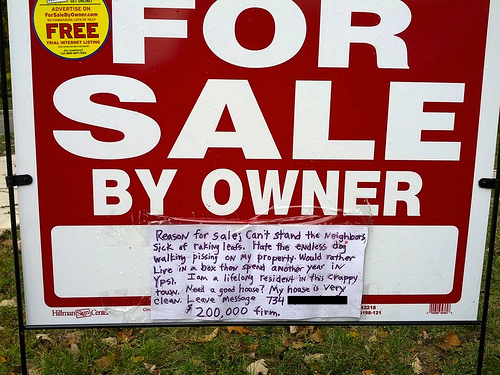

 As I’ve never met the folks behind this project, and have no clue as to how good it will be, I probably shouldn’t be promoting it, but, as a huge fan of both
As I’ve never met the folks behind this project, and have no clue as to how good it will be, I probably shouldn’t be promoting it, but, as a huge fan of both 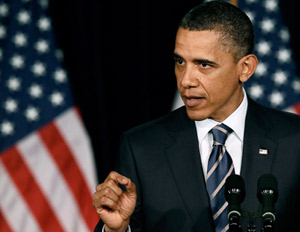 …Barack Obama began his Presidency devoted to the idea of post-partisanship. His rhetoric, starting with his “Red State, Blue State” Convention speech, in 2004, and his 2006 book, “The Audacity of Hope,” was imbued with that idea. Just as in his memoir, “Dreams from My Father,” he had tried to reconcile the disparate pasts of his parents, Obama was determined to bring together warring tribes in Washington and beyond. He extended his hand to everyone from the increasingly radical leadership of the congressional Republicans to the ruling mullahs of the Iranian theocracy. The Republicans, however, showed no greater interest in working with Obama than did the ayatollahs. The Iranian regime went on enriching uranium and crushing its opposition, and the Republicans, led by Dickensian scolds, including the Senate Minority Leader, Mitch McConnell, committed themselves to a single goal: to engineer the President’s political destruction by defeating his major initiatives. Obama, for his part, did not always prove particularly adept at, or engaged by, the arts of retail persuasion, and his dream of bipartisanship collided with the reality of obstructionism.
…Barack Obama began his Presidency devoted to the idea of post-partisanship. His rhetoric, starting with his “Red State, Blue State” Convention speech, in 2004, and his 2006 book, “The Audacity of Hope,” was imbued with that idea. Just as in his memoir, “Dreams from My Father,” he had tried to reconcile the disparate pasts of his parents, Obama was determined to bring together warring tribes in Washington and beyond. He extended his hand to everyone from the increasingly radical leadership of the congressional Republicans to the ruling mullahs of the Iranian theocracy. The Republicans, however, showed no greater interest in working with Obama than did the ayatollahs. The Iranian regime went on enriching uranium and crushing its opposition, and the Republicans, led by Dickensian scolds, including the Senate Minority Leader, Mitch McConnell, committed themselves to a single goal: to engineer the President’s political destruction by defeating his major initiatives. Obama, for his part, did not always prove particularly adept at, or engaged by, the arts of retail persuasion, and his dream of bipartisanship collided with the reality of obstructionism.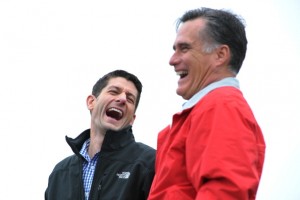 …In the service of (his) ambition, Romney has embraced the values and the priorities of a Republican Party that has grown increasingly reactionary and rigid in its social vision. It is a party dominated by those who despise government and see no value in public efforts aimed at ameliorating the immense and rapidly increasing inequalities in American society. A visitor to the F.D.R. Memorial, in Washington, is confronted by these words from Roosevelt’s second Inaugural Address, etched in stone: “The test of our progress is not whether we add more to the abundance of those who have much; it is whether we provide for those who have too little.” Romney and the leaders of the contemporary G.O.P. would consider this a call to class warfare. Their effort to disenfranchise poor, black, Hispanic, and student voters in many states deepens the impression that Romney’s remarks about the “forty-seven per cent” were a matter not of “inelegant” expression, as he later protested, but of genuine conviction.
…In the service of (his) ambition, Romney has embraced the values and the priorities of a Republican Party that has grown increasingly reactionary and rigid in its social vision. It is a party dominated by those who despise government and see no value in public efforts aimed at ameliorating the immense and rapidly increasing inequalities in American society. A visitor to the F.D.R. Memorial, in Washington, is confronted by these words from Roosevelt’s second Inaugural Address, etched in stone: “The test of our progress is not whether we add more to the abundance of those who have much; it is whether we provide for those who have too little.” Romney and the leaders of the contemporary G.O.P. would consider this a call to class warfare. Their effort to disenfranchise poor, black, Hispanic, and student voters in many states deepens the impression that Romney’s remarks about the “forty-seven per cent” were a matter not of “inelegant” expression, as he later protested, but of genuine conviction.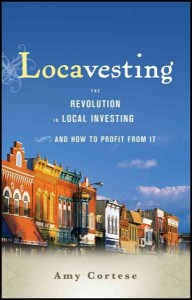 Next Tuesday, October 30,
Next Tuesday, October 30,  AMY: The reasons Milk Thistle went out of business had more to do with management than business model or viability, which I think underscores an important lesson: small businesses are risky investments and investors need to do their due diligence. Checking out the management team and their experience are important elements of that research. That said, I think the investors in this Milk Thistle deal were taken by surprise by the sudden turn of events. But they were all accredited investors – this was not a public offering, but a private placement. A more experienced (older) farmer has stepped in and has taken over the operation, from what I understand, so the investors are not necessarily out the money.
AMY: The reasons Milk Thistle went out of business had more to do with management than business model or viability, which I think underscores an important lesson: small businesses are risky investments and investors need to do their due diligence. Checking out the management team and their experience are important elements of that research. That said, I think the investors in this Milk Thistle deal were taken by surprise by the sudden turn of events. But they were all accredited investors – this was not a public offering, but a private placement. A more experienced (older) farmer has stepped in and has taken over the operation, from what I understand, so the investors are not necessarily out the money.  Crowdfunding is also a very interesting topic right now, as investment crowdfunding will become legal sometime next year. So you’ll be able to make loans or take equity stakes in small, private companies – something that’s very difficult to do right now (at least for the average investor) under current securities laws. There are challenges, but I think crowdfunding will be a huge game changer for local investing and can help create local financial ecosystems that support local economies. That’s something that I talk about a lot.
Crowdfunding is also a very interesting topic right now, as investment crowdfunding will become legal sometime next year. So you’ll be able to make loans or take equity stakes in small, private companies – something that’s very difficult to do right now (at least for the average investor) under current securities laws. There are challenges, but I think crowdfunding will be a huge game changer for local investing and can help create local financial ecosystems that support local economies. That’s something that I talk about a lot. 






